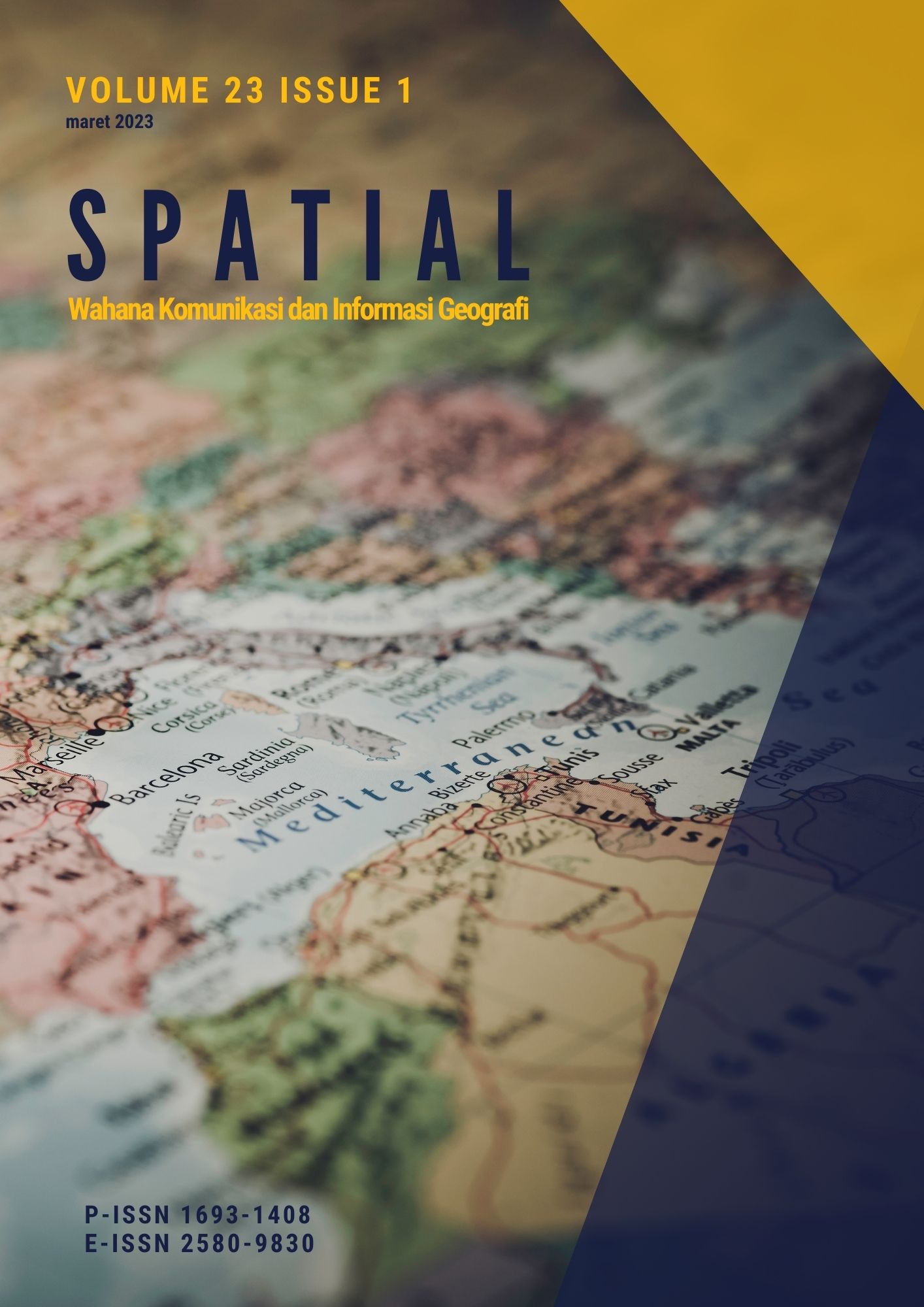Evaluation of Settlement Land Suitability Based on Remote Sensing and Geographical Information Systems in The City of Ambon
DOI:
https://doi.org/10.21009/spatial.231.006Keywords:
land suitability, Geography Information System, Remote Sensing, Kesesuaian Lahan, Sistem Informasi Geografi, Penginderaan JauhAbstract
The increasing need for settlement land has led to different suitability-based uses. This study evaluates land suitability for settlement, limiting factors, and development priorities. The methods used is qualitative with spatial analysis and quantitative with grading based on land units. This study uses Landsat 8 OLI/TIRS data, SRTM DEM, administrative maps, soil types, lithology, and landforms. Data was analyzed based on satellite imagery, approximations, and overlays. The study results show that processing satellite imagery with reasonable accuracy. For land suitability for settlements, the very unsuitable class is dominated by an area of 23592.48 acres, while the very suitable place is 6033.39 acres. For the direction of settlement development, priority I covers an area of 3,181.34 acres, priority II covers an area of 2,852.05 acres, and priority III covers an area of 8,237.89 acres. The findings in this study can be seen in the development of settlements in the regions that are not suitable (D2 II Pm), covering an area of 204.19 acres. Therefore, local governments need to apply regional regulations strictly to create land sustainability and prevent any impacts that may arise.
Downloads
Published
How to Cite
Issue
Section
License
An author who publishes in the journal SPATIAL Wahana Komunikasi dan Informasi Geografi agrees to the following terms:
Author retains the copyright and grants the journal the right of first publication of the work simultaneously licensed under the Creative Commons Attribution 4.0 License that allows others to share the work with an acknowledgement of the work's authorship and initial publication in this journal
Author is able to enter into separate, additional contractual arrangements for the non-exclusive distribution of the journal's published version of the work (e.g., post it to an institutional repository or publish it in a book) with the acknowledgement of its initial publication in this journal.
Author is permitted and encouraged to post his/her work online (e.g., in institutional repositories or on their website) prior to and during the submission process, as it can lead to productive exchanges, as well as earlier and greater citation of the published work (See The Effect of Open Access).
This work is licensed under a https://creativecommons.org/licenses/by/4.0/









